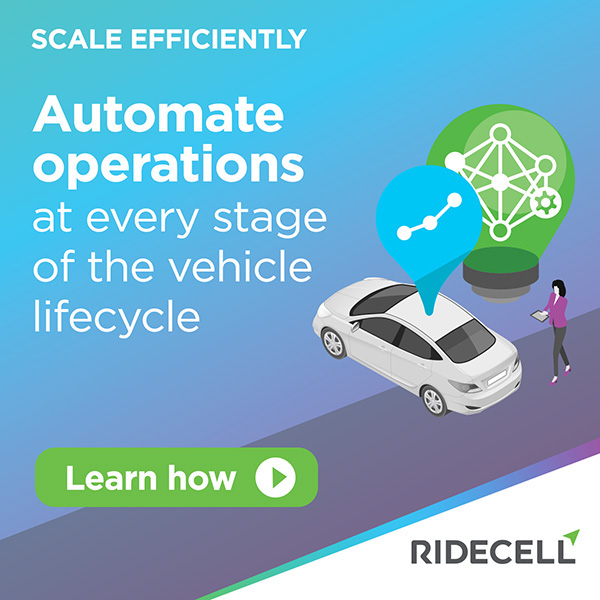Open Source Safety? Elektrobit Proves Future Cars Can Be Coded More Like Video Games
Cars are notoriously hard to code. Coding games is vastly easier, using widely open-source software that’s widely available for download, but while a software bug or defect may be irksome to an electronic gamer, a similar defect in any of the myriad safety critical systems onboard a vehicle could kill people.
Automotive software products and services supplier Elektrobit is introducing the first open-source software development kit certified for safety-critical automotive systems. Part of that compliance is warrantying and protecting the software against present and future bugs, glitches, and cyber attack threats via over-the-air (OTA) updates and continuous development.
Strategic Planning for Growing Your Business’s Fleet Utilizing Historical Data
By Rachael Plant, Senior Content Marketing Specialist, Fleetio
Expanding a business requires meticulous planning and strategic decision-making, as growth comes with its fair share of challenges, particularly when it comes to a business's fleet.
Businesses can use historical fleet data during growth planning to determine the number of assets needed — whether vehicles, equipment, or labor — to match growth projections.
Balancing the costs of acquiring and maintaining resources against projected revenue increases is essential to ensure financial viability and avoid over extension.
Through historical fuel use analysis, businesses can monitor fuel consumption trends, identify discrepancies, and implement strategies to improve fuel efficiency, such as route optimization, driver training programs, or improved preventive maintenance (PM) schedules.
NAFA’s 2024 Institute & Expo General Session Delivers Insights and Strategies for Fleet Management’s Future
Today NAFA Fleet Management Association (NAFA) held the highly anticipated General Session at its 2024 Institute & Expo (I&E) in San Antonio, featuring a dynamic panel with esteemed OEM leaders and a compelling industry update with Ted Cannis, CEO of Ford Pro.
"Today’s General Session at I&E provided attendees with unparalleled insights and strategies to navigate the ever-evolving landscape of fleet management," said Bill Schankel, CAE, CEO of NAFA. "From Ted Cannis’ enlightening industry update to the engaging discussions during the OEM Panel, our attendees gained invaluable perspectives to drive innovation and success in their respective fields."
The 10 Car Brands Cheapest to Maintain Over 10 Years
Buying a car can be fun and bring a lot of freedom, but things can go sideways when it comes time for repairs. There are few surprises on this list, but the cheapest new car and the runner-up might come as a shock.
Tesla and Buick were the cheapest new car brands to maintain and repair over 10 years, followed by Toyota, Lincoln, and Ford.
Maintenance costs for some brands can look deceiving, as many offer free maintenance for a period after the purchase. New-car warranties also play a role, with the powertrain coverage spanning four or five years and 50,000 or 60,000 miles, depending on the company.
Recognizing Excellence: NAFA Celebrates the Certified Automotive Fleet Manager Graduates at I&E
NAFA Fleet Management Association (NAFA) proudly celebrates the accomplishments of the graduates of its Certified Automotive Fleet Manager (CAFM) program. These future fleet leaders were just honored at NAFA’s 2024 Institute & Expo (I&E) in San Antonio, Texas.
“We are excited to recognize the outstanding achievements of our CAFM graduates,” says Mike Camnetar, CAFM, NAFA Board President. “These dedicated professionals have completed a comprehensive program that equips them with the skills and knowledge needed to drive innovation and excellence in fleet management. Congratulations to all the graduates.”
Recent Posts
- At NAFA 2024, Fleets Are Finding the Ways That Work on Their Electrification Journey
- NAFA Names the 2024 100 Best Fleets in the Americas at its Annual Institute & Expo
- Business Flexibility & Use Of Sophisticated Data: Reshaping Fleet Operations In 2024
- NAFA’s 2024 I&E Media Day Unveils Cutting-Edge Fleet Innovations & Insights
- Navigating the Switch from Gas to Electric Utility Vehicle (EUV) Fleets
- Open Source Safety? Elektrobit Proves Future Cars Can Be Coded More Like Video Games
- Strategic Planning for Growing Your Business’s Fleet Utilizing Historical Data
- NAFA’s 2024 Institute & Expo General Session Delivers Insights and Strategies for Fleet Management’s Future
- The 10 Car Brands Cheapest to Maintain Over 10 Years
- Recognizing Excellence: NAFA Celebrates the Certified Automotive Fleet Manager Graduates at I&E




























